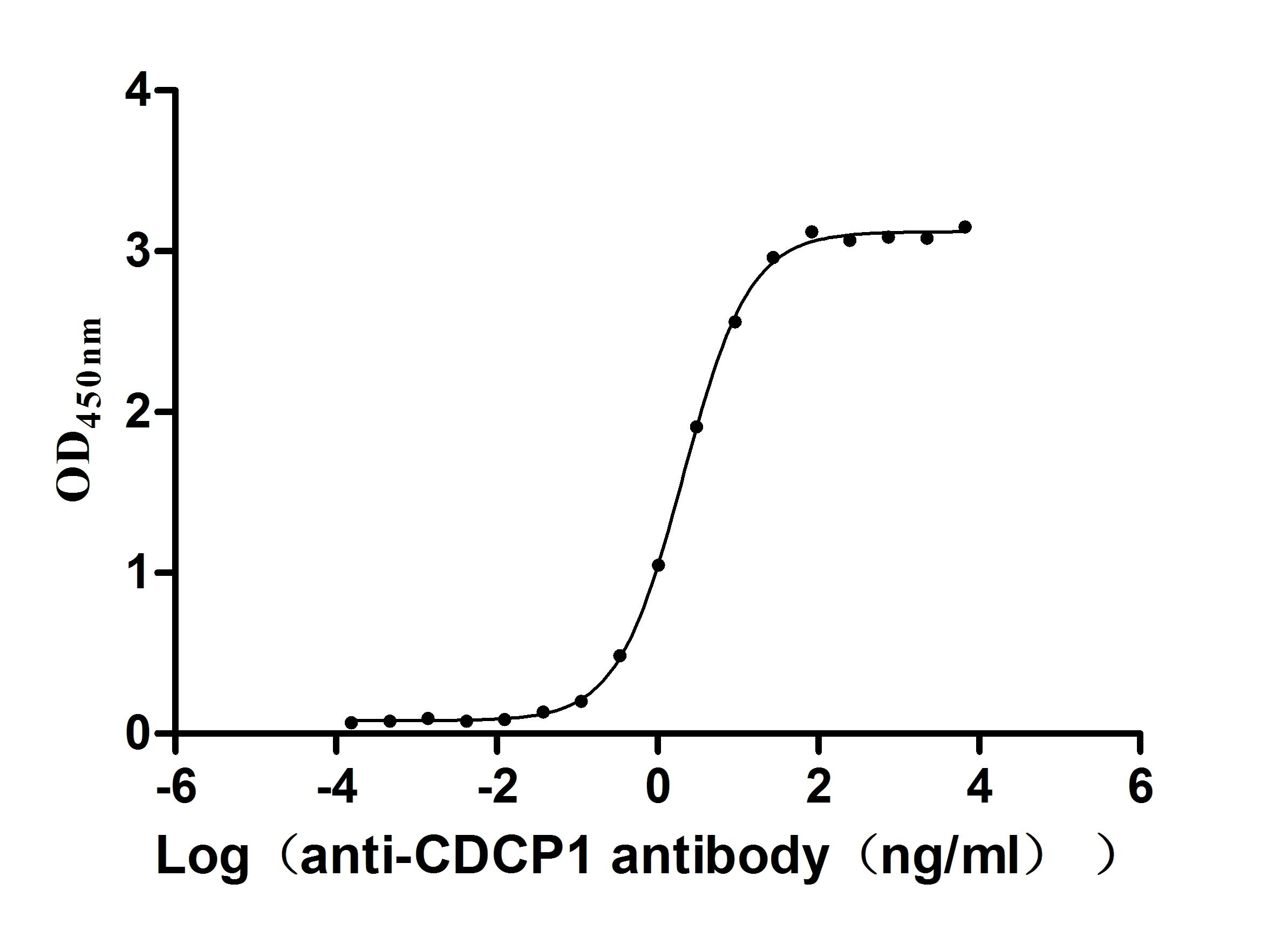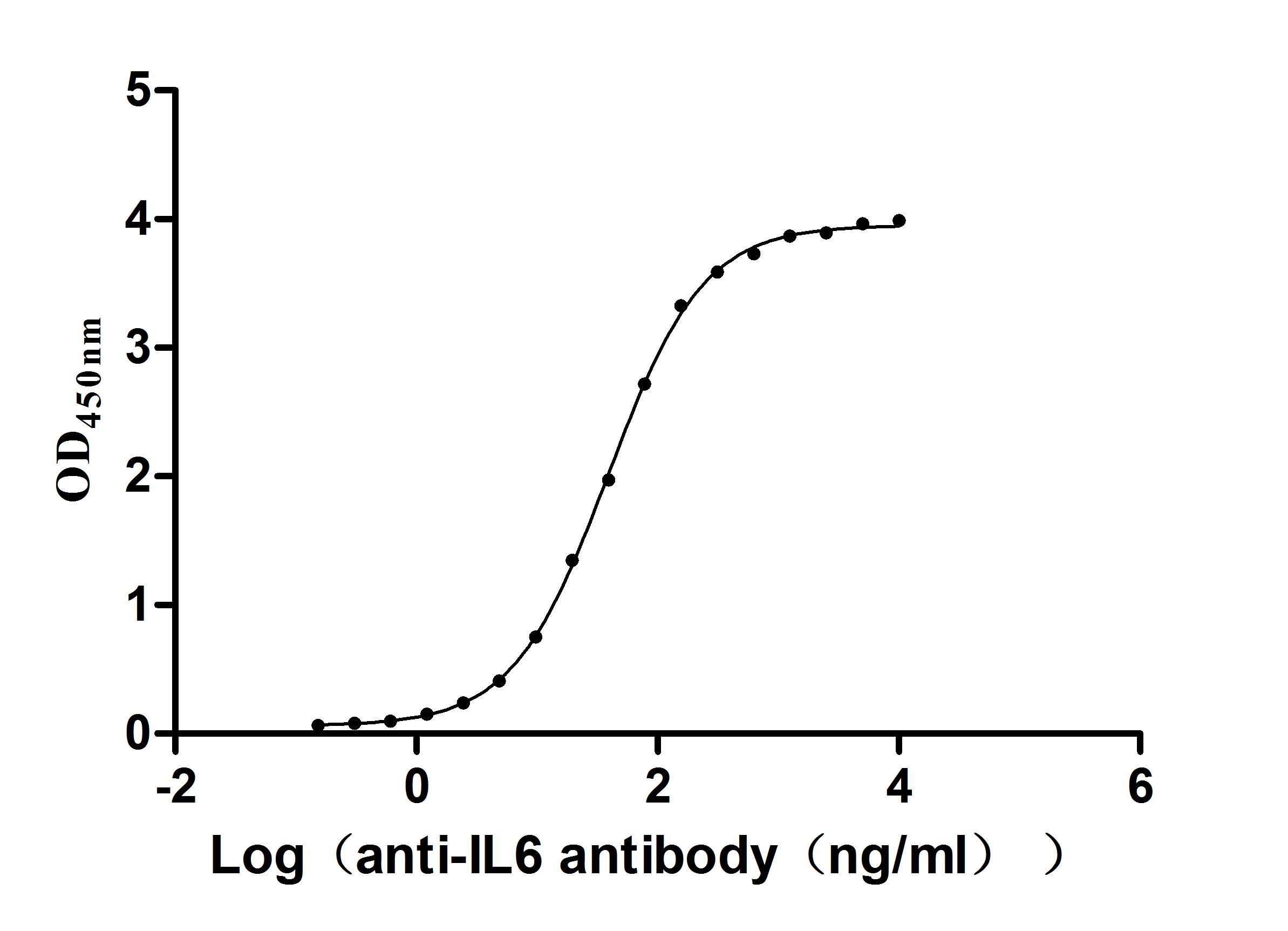Recombinant Human Tyrosine-protein phosphatase non-receptor type substrate 1 (SIRPA), partial
-
货号:CSB-MP021334HUh6
-
规格:¥1368
-
图片:
-
其他:
产品详情
-
纯度:Greater than 85% as determined by SDS-PAGE.
-
基因名:
-
Uniprot No.:
-
别名:Signal regulatory protein alpha type 1; Bit; Brain Ig like molecule with tyrosine based activation motifs; Brain Ig-like molecule with tyrosine-based activation motifs; Brain immunoglobulin like molecule with tyrosine based activation motifs; CD172 antigen like family member A; CD172 antigen-like family member A; CD172a; CD172a antigen; Inhibitory receptor SHPS-1; Macrophage fusion receptor; MFR; MYD 1; Myd 1 antigen; MyD-1 antigen; p84; Protein tyrosine phosphatase non receptor type substrate 1; PTPNS1; SHP substrate 1; SHPS-1; SHPS1; SHPS1_HUMAN; Signal regulatory protein alpha 2; Signal regulatory protein alpha 3; Signal regulatory protein alpha; Signal regulatory protein alpha type 2; Signal-regulatory protein alpha-1; Signal-regulatory protein alpha-2; Signal-regulatory protein alpha-3; SIRP; Sirp-alpha-1; Sirp-alpha-2; Sirp-alpha-3; SIRPA; SIRPalpha; SIRPalpha1; SIRPalpha2; SIRPalpha3; Tyrosine phosphatase SHP substrate 1; Tyrosine protein phosphatase non receptor type substrate 1; Tyrosine-protein phosphatase non-receptor type substrate 1
-
种属:Homo sapiens (Human)
-
蛋白长度:Partial
-
来源:Mammalian cell
-
分子量:67.40000000000001
-
表达区域:31-370aa
-
氨基酸序列EEELQVIQPDKSVLVAAGETATLRCTATSLIPVGPIQWFRGAGPGRELIYNQKEGHFPRVTTVSDLTKRNNMDFSIRIGNITPADAGTYYCVKFRKGSPDDVEFKSGAGTELSVRAKPSAPVVSGPAARATPQHTVSFTCESHGFSPRDITLKWFKNGNELSDFQTNVDPVGESVSYSIHSTAKVVLTREDVHSQVICEVAHVTLQGDPLRGTANLSETIRVPPTLEVTQQPVRAENQVNVTCQVRKFYPQRLQLTWLENGNVSRTETASTVTENKDGTYNWMSWLLVNVSAHRDDVKLTCQVEHDGQPAVSKSHDLKVSAHPKEQGSNTAAENTGSNER
Note: The complete sequence including tag sequence, target protein sequence and linker sequence could be provided upon request. -
蛋白标签:C-terminal FC-Myc-tagged
-
产品提供形式:Liquid or Lyophilized powder
Note: We will preferentially ship the format that we have in stock, however, if you have any special requirement for the format, please remark your requirement when placing the order, we will prepare according to your demand. -
缓冲液:Tris-based buffer,50% glycerol
-
储存条件:Store at -20°C/-80°C upon receipt, aliquoting is necessary for mutiple use. Avoid repeated freeze-thaw cycles.
-
保质期:The shelf life is related to many factors, storage state, buffer ingredients, storage temperature and the stability of the protein itself.
Generally, the shelf life of liquid form is 6 months at -20°C/-80°C. The shelf life of lyophilized form is 12 months at -20°C/-80°C. -
货期:Basically, we can dispatch the products out in 1-3 working days after receiving your orders. Delivery time may differ from different purchasing way or location, please kindly consult your local distributors for specific delivery time.Note: All of our proteins are default shipped with normal blue ice packs, if you request to ship with dry ice, please communicate with us in advance and extra fees will be charged.
-
注意事项:Repeated freezing and thawing is not recommended. Store working aliquots at 4°C for up to one week.
-
Datasheet & COA:Please contact us to get it.
相关产品
靶点详情
-
功能:Immunoglobulin-like cell surface receptor for CD47. Acts as docking protein and induces translocation of PTPN6, PTPN11 and other binding partners from the cytosol to the plasma membrane. Supports adhesion of cerebellar neurons, neurite outgrowth and glial cell attachment. May play a key role in intracellular signaling during synaptogenesis and in synaptic function. Involved in the negative regulation of receptor tyrosine kinase-coupled cellular responses induced by cell adhesion, growth factors or insulin. Mediates negative regulation of phagocytosis, mast cell activation and dendritic cell activation. CD47 binding prevents maturation of immature dendritic cells and inhibits cytokine production by mature dendritic cells.
-
基因功能参考文献:
- Accumulation of SIRPalpha-inhibited macrophages in tumors favored tumor regression for 1-2 weeks, but donor macrophages quickly differentiated toward non-phagocytic, high-SIRPalpha TAMs. PMID: 28669759
- SIRP alpha protein is under-expressed in low and high-grades of astrocytoma from patients' brain samples. PMID: 27900675
- Anti-SIRPA antibody immunotherapy enhances neutrophil and macrophage antitumor activity. PMID: 29158380
- SIRPalpha might play an important role in the progression of oral leukoplakia and oral cancer, and could be a pivotal therapeutic target in oral squamous cell carcinoma, regulating the phenotype of macrophages via targeting NF-kappaB signaling. PMID: 27793032
- TTI-621 (SIRPalphaFc) is a fully human recombinant fusion protein that blocks the CD47-SIRPalpha axis by binding to human CD47 and enhancing phagocytosis of malignant cells..These data indicate that TTI-621 is active across a broad range of human tumors. PMID: 27856600
- data suggest that TTI-621 may be efficacious in triggering the destruction of cancer cells by a diverse population of TAMs found in vivo and support possible combination approaches to augment the activity of CD47 blockade PMID: 29084248
- CD47, TSP1, and to a lesser extent SIRPalpha facilitate exosome-mediated myeloid-derived suppressor cells chemotaxis and migration. PMID: 27728760
- exploited by Hepatitis E virus to negative regulated IFN-beta of the host innate immune system to promote viral infection PMID: 26492885
- Data suggest a reduction in the CD47 antigen/signal-regulatory protein alpha (SIRPalpha) pathway by programmed cell death protein 1 (PD-1) blockade, which regulates Myeloid-derived suppressor cells (MDSCs) and tumor associated macrophages (TAMs). PMID: 26573233
- agents that block the CD47:SIRP-alpha engagement are attractive therapeutic targets as a monotherapy or in combination with additional immune-modulating agents for activating antitumor T cells in vivo PMID: 26116271
- the data suggest that combinatorial actions of ADAM10 and gamma-secretase on SIRPalpha cleavage promote inflammatory signaling. PMID: 26534964
- Loss of cell surface CD47 clustering formation and binding avidity to SIRPalpha facilitate apoptotic cell clearance by macrophages. PMID: 26085683
- Velcro" engineering of high affinity CD47 ectodomain as signal regulatory protein alpha (SIRPalpha) antagonists that enhance antibody-dependent cellular phagocytosis PMID: 25837251
- negatively regulates neutrophil accumulation during inflammation PMID: 24516072
- Combinatorial expression of NKX2-5, SIRPA, VCAM1 and CD34 can be used to define discrete stages of cardiovascular cell lineage differentiation. PMID: 24968096
- These results suggest that thrombospondin-1 binding to SIRP-alpha on nonphagocytic cells activates NADPH oxidase, limits vasodilation, and promotes renal ischemia reperfusion injury. PMID: 24511121
- 'clustering' SIRPalpha into plasma membrane microdomains is essential for activated monocytes and macrophages to effectively interact with CD47 and initiate intracellular signaling PMID: 24143245
- Polymorphisms in the human inhibitory signal-regulatory protein alpha do not affect binding to its ligand CD47. PMID: 24550402
- SIRPA plays a protective role in cardiac hypertrophy through negative regulation of the Toll-like receptor 4/nuclear factor-kappaB pathway. PMID: 24101669
- These results demonstrate a SIRPalpha-based mechanism that dynamically regulates polymorphonuclear leukocyte inflammatory responses. PMID: 24026300
- Signal regulatory protein alpha is associated with tumor-polarized macrophages phenotype switch and plays a pivotal role in tumor progression. PMID: 23504854
- An avidity-improved CD47 fusion protein (CD47-Var1) suppresses the release of a wide array of inflammatory cytokines by CD172a(+) cells. PMID: 23669395
- Expression of SIRPalpha on two low SIRPalpha acute myeloid leukemia (AML) expressing cell lines could be upregulated upon differentiation of the cells. PMID: 23320069
- SHPS-1 negatively regulates the MyD88-dependent TLR signaling pathway through the inhibition of NF-kappaB activation PMID: 23314616
- IFN-beta and IFN-gamma/TNF-alpha decrease erythrophagocytosis by human monocytes in vitro, and this effect does not apparently require an increase in SIRP-alpha or SHP-1 expression. PMID: 22738830
- neutrophils reduce their SIRPalpha expression during apoptosis, which may be part of the functional down-regulation seen in apoptotic neutrophils. PMID: 23271705
- thymic Sirpalpha(+) cDCs crucially contribute to a process of intrathymic tumor immune tolerance that involves CCR2 and CCL2 PMID: 22815949
- In the glomeruli of CNS patients carrying mutations in NPHS1, where SD formation is disrupted, the expression of SIRPalpha as well as Neph1 and nephrin was significantly decreased, indicating that SIRPalpha is closely associated with the nephrin complex PMID: 22747997
- Surfactant protein D (Sp-D) binds to membrane-proximal domain (D3) of signal regulatory protein alpha (SIRPalpha), a site distant from binding domain of CD47, while also binding to analogous region on signal regulatory protein beta (SIRPbeta). PMID: 22511785
- SIRPalpha1 in hepatic sinusoid Kupffer cells is associated with the extent of autoimmune hepatitis. PMID: 22409853
- data, taken together with similar findings with other human neoplasms, show that CD47 is a commonly expressed molecule on all cancers, its function to block phagocytosis is known, and blockade of its function leads to tumor phagocytosis and elimination PMID: 22451913
- SIRPalpha/CD172a and FHOD1 are unique markers of littoral cells, a recently evolved major cell population of red pulp of human spleen. PMID: 22490440
- Sensing of cell surface CD47 expression by phagocyte SIRPalpha is a critical determinant of T- and natural killer-cell homeostasis under steady-state conditions in vivo. PMID: 21788504
- hSIRPa-transgenic Rag2(-/-)gamma(c)(-/-) mice represent a unique mouse strain supporting high levels of human cell engraftment. PMID: 21788509
- The prolactin receptor (PRLr)-SIRPalpha-integrin complex provides a basis for integrin-PRLr cross-talk that contributes to the biology of breast cancer. PMID: 20826546
- the relationships between SIRPalpha1 and beta-catenin in leukemia cells. PMID: 21369691
- Single Nucleotide Polymorphisms in PTPNS1 is associated with inflammatory bowel disease. PMID: 21225905
- SHP-2 as an essential component of tumor suppression and anoikis mediated by SIRPalpha1 in human breast carcinoma cells as well as in v-Src-transformed cells. PMID: 21169408
- Poor prognosis of breast cancer patients with high expression of CD47 is due to an active CD47/SIRPA signaling pathway in circulating cells. PMID: 20705613
- The role of cis dimerization of signal regulatory protein alpha (SIRPalpha) in binding to CD47. PMID: 20826801
- Findings reveal a novel mechanism for recruitment of PDK1 to the SHPS-1 signaling complex, which is required for IGF-I-stimulated AKT Thr(308) phosphorylation and inhibition of apoptosis. PMID: 20643654
- Inhibition of engulfment correlates with affinity of CD47 for SIRPA - but only at low levels of CD47. PMID: 20299253
- SIRPalpha1 specifically affects the SHP-2/FAK/Grb2/Sos-1/MAPK activation loop to downmodulate EGFRvIII-mediated migration and transformation. PMID: 20473329
- Insulin-like growth factor-I-stimulated insulin receptor substrate-1 negatively regulates Src homology 2 domain-containing protein-tyrosine phosphatase substrate-1 function in vascular smooth muscle cells. PMID: 20207740
- SIRP alpha gene expression is higher in monocytes from autoimmune hemolytic anemia patients, compared with basal expression. PMID: 19874234
- CD47/SIRP-alpha interactions are implicated in the pathogenesis of DC-driven allergic airway inflammation. PMID: 19748659
- Signal regulatory protein (SIRPalpha), a cellular ligand for CD47, regulates neutrophil transmigration PMID: 11792697
- The interaction of SHPS-1 with CD47 may contribute to the recruitment of B lymphocytes via endothelial cells under steady state conditions. PMID: 11907074
- MyD-1-coupling to this PI 3-kinase-dependent signaling pathway may therefore present a novel target for the development of therapeutic strategies for combating TNFalpha production and consequent inflammatory disease. PMID: 12805067
- Expression of SIRPalpha1 on astrocytomas may be of considerable importance in brain tumor biology. PMID: 14729615
显示更多
收起更多
-
亚细胞定位:Membrane; Single-pass type I membrane protein.
-
组织特异性:Ubiquitous. Highly expressed in brain. Detected on myeloid cells, but not T-cells. Detected at lower levels in heart, placenta, lung, testis, ovary, colon, liver, small intestine, prostate, spleen, kidney, skeletal muscle and pancreas.
-
数据库链接:
HGNC: 9662
OMIM: 602461
KEGG: hsa:140885
STRING: 9606.ENSP00000348307
UniGene: Hs.581021
Most popular with customers
-
Express system: Mammalian cell
Species: Homo sapiens (Human)
-
Recombinant Human Alkaline phosphatase, germ cell type (ALPG) (Active)
Express system: Mammalian cell
Species: Homo sapiens (Human)
-
Recombinant Human C-type lectin domain family 4 member C (CLEC4C), partial (Active)
Express system: Mammalian cell
Species: Homo sapiens (Human)
-
Recombinant Human CUB domain-containing protein 1 (CDCP1), partial (Active)
Express system: Mammalian cell
Species: Homo sapiens (Human)
-
Recombinant Macaca fascicularis CUB domain containing protein 1 (CDCP1), partial (Active)
Express system: Mammalian cell
Species: Macaca fascicularis (Crab-eating macaque) (Cynomolgus monkey)
-
Recombinant Human CD70 antigen (CD70), partial (Active)
Express system: Mammalian cell
Species: Homo sapiens (Human)
-
Recombinant Human C-C chemokine receptor type 6(CCR6)-VLPs (Active)
Express system: Mammalian cell
Species: Homo sapiens (Human)
-





















